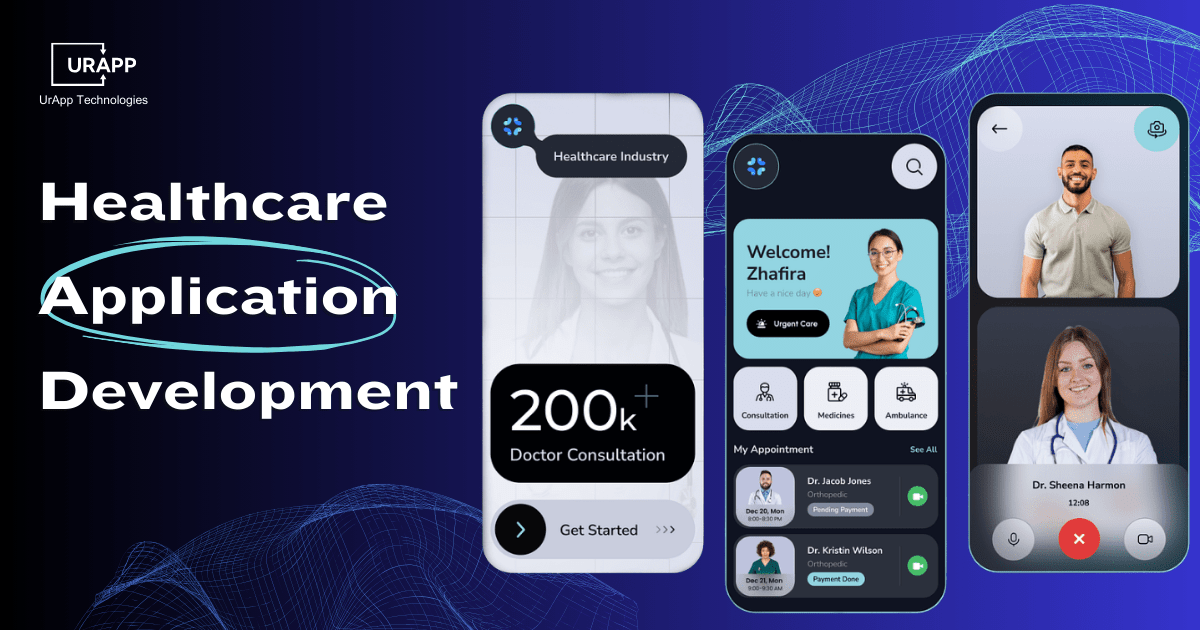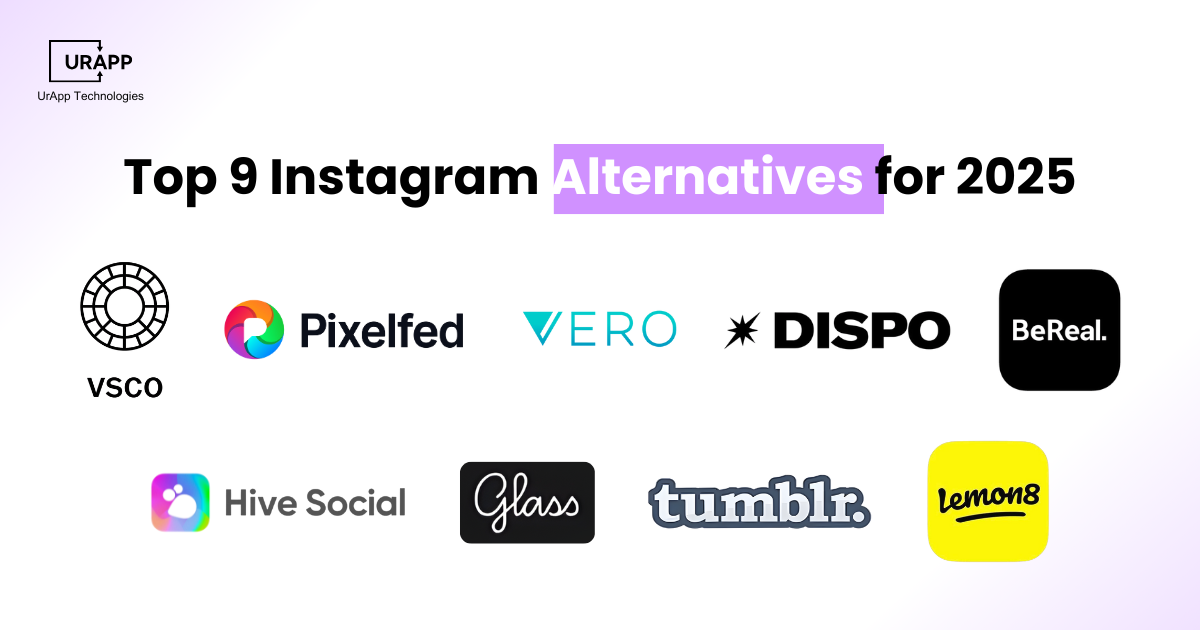How to Design a Future-Proof Mobile App Architecture
Due to the increasing demand and popularity of mobile apps, mobile app development businesses are now required to give mobile app architecture top priority to facilitate a more efficient development process. To be competitive, mobile app developers must build mobile app architectures that can surpass and meet future demands. This blog will explain every aspect of how to design a mobile application architecture.
Understanding Mobile App Architecture
Before starting any project or even a construction, one needs a detailed and defined structure that works as a road map, defining stages and purpose. Similarly for a successful mobile app development, building an accurate and defined mobile app architecture is super important because it tells how a mobile app is going to behave.
The mobile application architecture works as a blueprint, which guides the developers throughout the process. User experience, scalability, and performance are all important aspects of this system.
A mobile application's architecture usually consists of three layers: the data layer, the business logic layer and lastly the presentation layer. Every layer is essential to the seamless and effective operation of the application.
Importance of Mobile App Architecture
The importance of mobile app architecture can be measured with the fact that, as much as you perfected your mobile app structure, the more excellent your app performance and user experience would be. The structure makes it easy for the developers to know on which feature they should work on without disturbing the existing functionality.
Because of perfect mobile app architecture, The development game becomes easy which leads to successful app completion. Resulting in higher download rates and great user experience.
In 2023, more than 257 billion mobile applications were downloaded worldwide, and this figure is expected to rise, according to Statista. This highlights the need of having excellent apps that can adapt to users' shifting needs.

Key Principles of Mobile App Architecture
Developing Mobile app architecture requires a sequence, which mobile app developers should follow to ensure that the mobile app will remain efficient, user friendly and easily maintainable despite future changes.
Modularity
If we break tasks in teams it would become easy to complete it efficiently, that is what modularity does. By breaking the app up into smaller parts, the developers may more easily work on certain sections at a time to improve functionality without harming the app as a whole. This approach enhances maintainability and encourages code reuse.
Scalability
A great mobile app architecture is one that can grow with the amount of users and manage traffic without compromising the app's functionality. Whether using cloud services or more server resources, developers should create architectures that are easily scalable.
Flexibility
Flexibility in mobile app architecture allows developers to adjust to evolving requirements. The architecture should support new technologies and frameworks, facilitating the smooth integration of third-party services. This adaptability helps ensure that the app stays relevant and functional over time.
Components of Mobile App Architecture
Knowing the basic components of the architecture is necessary for designing mobile applications effectively. Each component has a unique role in enhancing the overall operation of the application.
Presentation Layer
The first layer is the presentation layer, which represents the Mobile App. All the features and buttons are shown in this layer, like the button, icons and menus etc. The more the presentation layer is well defined and designed the more it increases the user engagements and gives excellent user experience. Developers must work hard to make this first impression a great one.
Business Logic Layer
This layer consists of the core functionality of an application. It collects and analyzes the user's input, uses it and makes decisions with the data layer. This layer plays a crucial role to make the app behave the way users want in order to meet user needs. While creating this layer, developers must utilize clear and strong algorithms to optimize and analyze data and performance.
Data Layer
A layer that does data storage. It manages the internal and external sources of data. This layer makes sure that the data no matter how big in volume is secure. While working on this layer developers must use data encryption and security access to protect the user data.
Mobile App Architecture Diagram

Having an excellent mobile app architecture diagram is crucial for understanding the app. A mobile app architecture diagram helps the developers to understand the road map of the app, relationship between components. It shows what the connection between presentation, business and data layer have and how they will work together.
Creating a well defined mobile app architecture diagram will help the developers understand the basics, the bottlenecks and where the app needs improvement. This visual presentation helps in planning and communicating with the stakeholders. Lucidchart and Draw.io are your best friends when it comes to mobile app architecture diagrams.
Choosing the Right Technology Stack
Creating any app is incomplete without knowing the platform you would want to work on or the technology stack you want to use. It is considered as an important factor before building a mobile application architecture. The selection of an appropriate technology stack would help you choose the right programming language, framework in programming and the best tools for app development.
The better technology stack you choose the better your app performance, scalability and maintainability would be.
Factors that would help you in choosing the right technology stack includes target audience, platform requirements, and the resources available. The popular frameworks for mobile app development include react native, Flutter and Xamarin, All these are highly popular for their unique advantages. However, Choosing the right technology stack is crucial in the overall success of your Mobile app.
Mobile App Architecture Development Process

Building mobile app architecture does require a sequential development process. Each stage must be done perfectly in order to achieve an outstanding end result.
Planning
Design
Developers create application mockups and wireframes throughout the design stage. During the design phase, developers produce wireframes and application mockups. Making the application user-friendly and intuitive is the main goal of this phase. Before the design is developed, stakeholder input can help make it better.
Development
Writing code and creating the application are part of the development step. Developers should adhere to the specified architecture and best practices for coding. During this stage, routine testing guarantees that the application fulfils quality standards and operates as intended. Teamwork can improve the development process.
Testing
Testing is a critical step after design and development of the mobile app, Doing it ensures the transparency and performance of the mobile app. It helps in detecting the present bugs and errors in the app feature and functionality. Identifying and solving these bugs ensures the app works according to the users expectations. It helps in minimizing the post launch issues of the mobile app.
Deployment
After testing is finished, the application is prepared for release. When launching the application, developers should select an appropriate platform, such as web-based solutions or app stores. Post-launch monitoring is necessary to resolve any problems that may occur. Continuous user feedback can help shape future upgrades.
Future Trends in Mobile App Architecture

Cloud-Based Solutions
Developers can benefit from cost-effectiveness, scalability, and flexibility when cloud-based technologies are incorporated into mobile app architecture. Cloud services facilitate maintenance and updates by allowing developers to host, process, and store data. This trend supports the growing need for real-time data availability.
Artificial Intelligence
Internet of Things (IoT)
The Internet of Things (IoT) has changed the architecture of mobile applications. The increasing quantity of networked devices requires mobile applications to change. The smooth integration of apps with IoT devices is a crucial consideration for developers. This integration can lead to innovative functionalities, especially in Android app development for IoT.
Conclusion
A mobile app architecture that is future-proof requires careful consideration of several factors. Developers need to give modularity, scalability, and flexibility a priority when creating programs that last.
By keeping up with emerging trends and understanding the components of mobile application architecture, developers may create dependable solutions that meet user expectations.
Get in touch with a custom mobile app development company like UrApp Tech right now if you wish to include your own original concepts in your app. We can help you create an application that meets your business objectives with our expertise in mobile app development and architecture.







